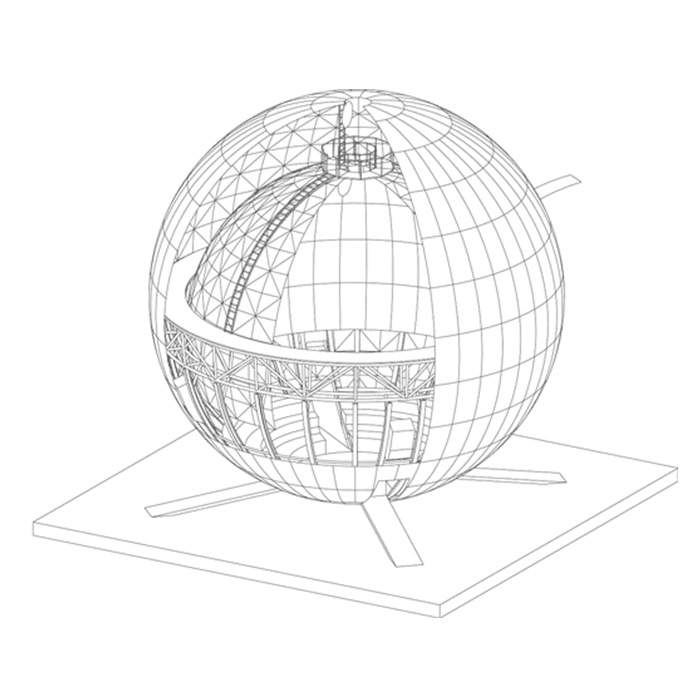

Domes
Choosing a projection dome means choosing a dome manufacturer.
At Skypoint Planetariums, we understand that the foundation of a truly immersive astronomical experience begins with the right dome.
We offer a wide array of dome options to suit any venue and enhance any educational or entertainment environment. Our selection includes aluminum domes known for their durability and excellent projection quality, negative pressure domes that combine resistance and lightness and inflatable domes that offer flexibility and convenience for events and traveling exhibits.
We provide also inflatable domes for outdoor and indoor. The primary goal of a planetarium projection dome is a seamless surface upon which to display a representation of the star field. To that end, each manufacturer has a unique approach to fabrication and installation. For example, Spitz domes consist of pre-coated panels that are said to be quite durable and very uniform in color.
Most modern domes are constructed of perforated aluminum panels. Normally the perforations amount to approximately 22% void area. This allows speakers and HVAC ducts to be mounted behind the dome screen and reduces internal echoes. but in this case the room must has a sufficient space rear the dome for installation and maintenance work.
Characteristic of the Dome
Domes also come in different reflectivity – that is, they are painted or coated with materials that reflect different amounts of light. This is said to reduce cross-bounce: the effect of illuminating one side of the screen and having reflected light show up on the other side of the screen, reducing the overall contrast of the image.
Your operative philosophy will most likely dictate whether or not your dome is to be tilted. The argument goes something like this. Flat domes preserve the sense of horizon and can maximize seating capacity. Tilt domes allow the audience to be closer to the action and provide a greater sense of immersion.


Dome diameter vs. Number of seats
There is no simple formula correlating dome size to seating capacity. It depends on the size of the seats, the area devoted to centrally located projectors, whether or not the seating is directional, how much the dome is tilted, if at all, and the size of any stage area. The table below will give you a very rough idea of typical seating capacities of various dome sizes.
| Dome Diameter Range | Approximate Seating Capacity |
| Less than 7 meters | 10 – 50 * |
| 7 to 11 meters | 30 – 130 |
| 11 to 13 meters | 40 – 200 |
| 13 to 16 meters | 140 – 250 |
| 16 to 19 meters | 200 – 270 |
| 19 meters and greater | 250 – 400 |
* Audiences larger than 50 have been accommodated under special circumstances in which the audience is an unusually far distance from the dome with extreme dome tilt or height.
